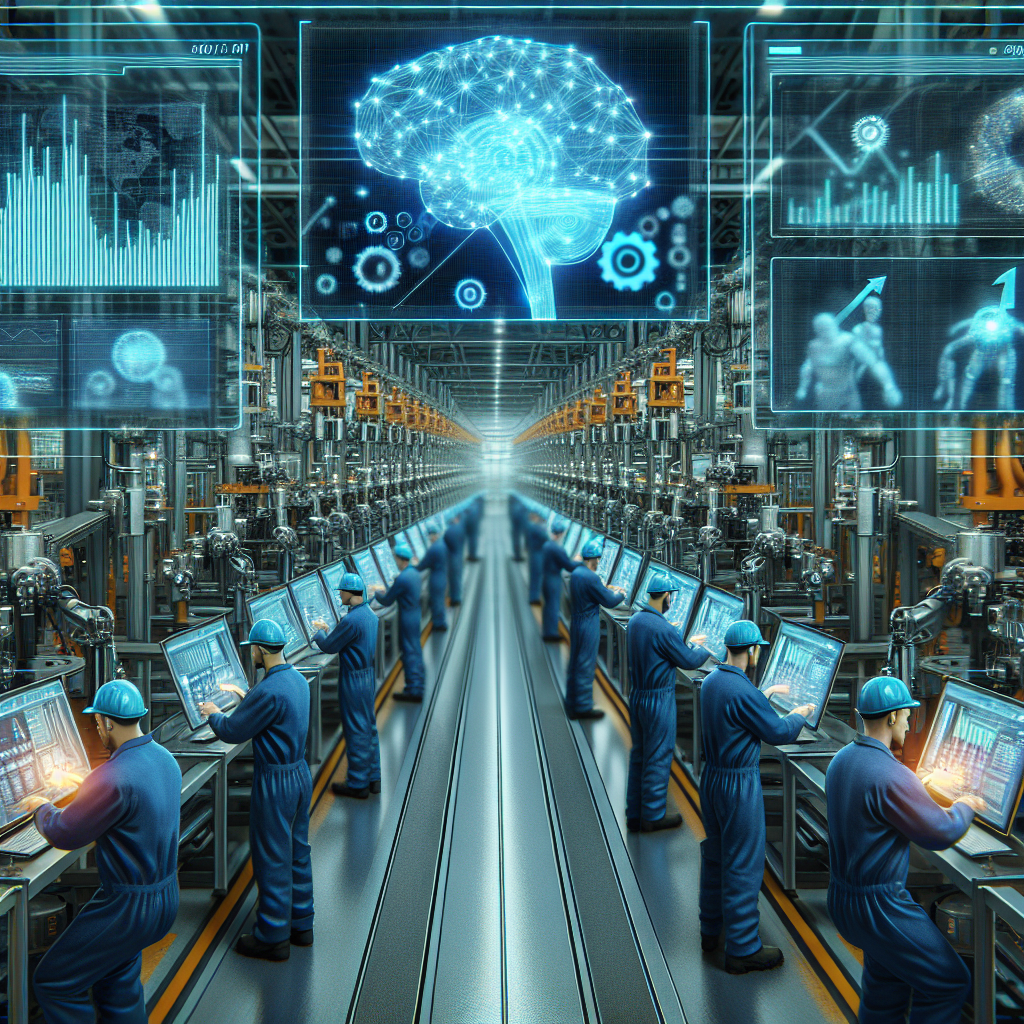In the fast-paced world of manufacturing, one of the key challenges that companies face is accurately forecasting production demand. Predicting how much product to manufacture is crucial for optimizing production schedules, controlling inventory levels, and ensuring customer satisfaction. Traditional forecasting methods, such as statistical analysis and historical data analysis, have limitations in accurately predicting demand in today’s dynamic and complex manufacturing environments.
However, with the advancement of artificial intelligence (AI) technology, manufacturers now have access to powerful tools that can revolutionize production forecasting. AI-powered production forecasting uses machine learning algorithms to analyze vast amounts of data and make real-time predictions about future demand. By harnessing the power of AI, manufacturers can improve forecast accuracy, reduce lead times, and optimize production processes.
How AI-powered Production Forecasting Works
AI-powered production forecasting works by analyzing historical data, such as sales figures, customer orders, inventory levels, and external factors like market trends and economic indicators. This data is fed into machine learning algorithms, which learn patterns and trends from the data to make accurate predictions about future demand. These algorithms can analyze large, complex datasets much faster and more accurately than human analysts, enabling manufacturers to make better-informed decisions about production planning and scheduling.
One of the key advantages of AI-powered production forecasting is its ability to adapt and learn from new data in real-time. As new information becomes available, the algorithms can adjust their predictions to reflect changing market conditions, customer preferences, or other factors that may impact demand. This flexibility allows manufacturers to respond quickly to changes in demand and optimize production schedules accordingly.
Benefits of AI-powered Production Forecasting
There are several key benefits that AI-powered production forecasting can provide to manufacturers:
1. Improved Forecast Accuracy: By leveraging AI technology, manufacturers can achieve higher forecast accuracy levels compared to traditional methods. AI algorithms can analyze vast amounts of data and identify patterns and trends that may not be apparent to human analysts, leading to more accurate predictions of future demand.
2. Reduced Lead Times: AI-powered production forecasting can help manufacturers reduce lead times by optimizing production schedules based on accurate demand forecasts. By knowing exactly how much product to manufacture and when, manufacturers can streamline their production processes and minimize delays in delivering products to customers.
3. Cost Savings: Improved forecast accuracy and reduced lead times can lead to cost savings for manufacturers. By minimizing excess inventory levels and avoiding stockouts, manufacturers can reduce carrying costs and improve overall operational efficiency.
4. Enhanced Customer Satisfaction: Accurate production forecasting enables manufacturers to meet customer demand more effectively, leading to higher customer satisfaction levels. By delivering products on time and in the right quantities, manufacturers can build stronger relationships with customers and enhance their reputation in the market.
5. Scalability: AI-powered production forecasting is scalable and can be applied to different manufacturing environments, from small-scale operations to large, complex production facilities. Whether manufacturing consumer goods, automotive parts, or electronics, AI technology can be tailored to specific industry requirements and production processes.
FAQs about AI-powered Production Forecasting in Manufacturing
Q: What types of data are used in AI-powered production forecasting?
A: AI-powered production forecasting uses a variety of data sources, including historical sales figures, customer orders, inventory levels, market trends, economic indicators, and other relevant information that may impact demand. By analyzing these datasets, AI algorithms can make accurate predictions about future demand and optimize production schedules accordingly.
Q: How accurate are AI-powered production forecasts?
A: The accuracy of AI-powered production forecasts can vary depending on the quality of the data, the complexity of the production environment, and the effectiveness of the machine learning algorithms used. In general, AI technology can achieve higher forecast accuracy levels compared to traditional methods, but it is important to continuously monitor and adjust the forecasting models to improve accuracy over time.
Q: How can manufacturers implement AI-powered production forecasting in their operations?
A: Manufacturers can implement AI-powered production forecasting by partnering with AI technology providers or building in-house AI capabilities. By integrating AI algorithms into their existing production planning systems, manufacturers can leverage the power of AI to make better-informed decisions about production scheduling, inventory management, and demand forecasting.
Q: What are the key challenges of implementing AI-powered production forecasting in manufacturing?
A: Some of the key challenges of implementing AI-powered production forecasting in manufacturing include data quality issues, the need for specialized AI expertise, and potential resistance from employees to adopting new technologies. Manufacturers must invest in data quality initiatives, training programs, and change management strategies to overcome these challenges and successfully implement AI technology in their operations.
Q: What are the future trends in AI-powered production forecasting?
A: The future trends in AI-powered production forecasting include the integration of advanced AI technologies, such as deep learning and neural networks, to improve forecast accuracy even further. Manufacturers are also exploring the use of AI-powered predictive analytics to anticipate demand fluctuations and optimize production processes in real-time. As AI technology continues to evolve, manufacturers can expect to see more sophisticated and innovative solutions for production forecasting in the years to come.
In conclusion, AI-powered production forecasting is revolutionizing the manufacturing industry by enabling manufacturers to make more accurate predictions about future demand, reduce lead times, and optimize production processes. By leveraging the power of AI technology, manufacturers can improve forecast accuracy, reduce costs, enhance customer satisfaction, and gain a competitive edge in the market. As AI technology continues to evolve, manufacturers can expect to see even more advanced and innovative solutions for production forecasting that will drive operational excellence and business growth.

